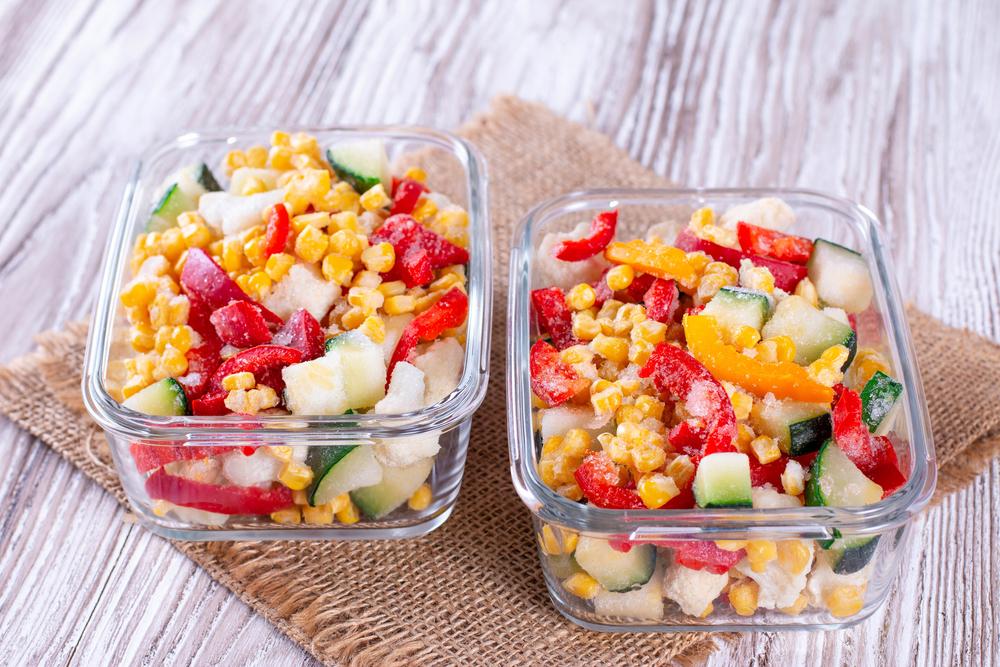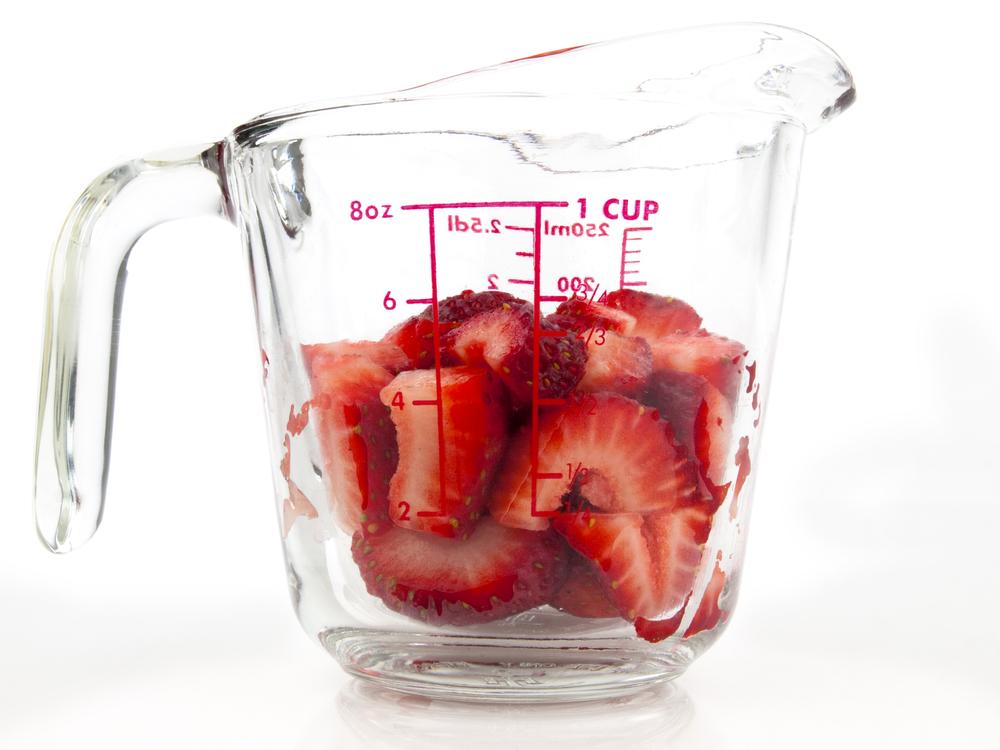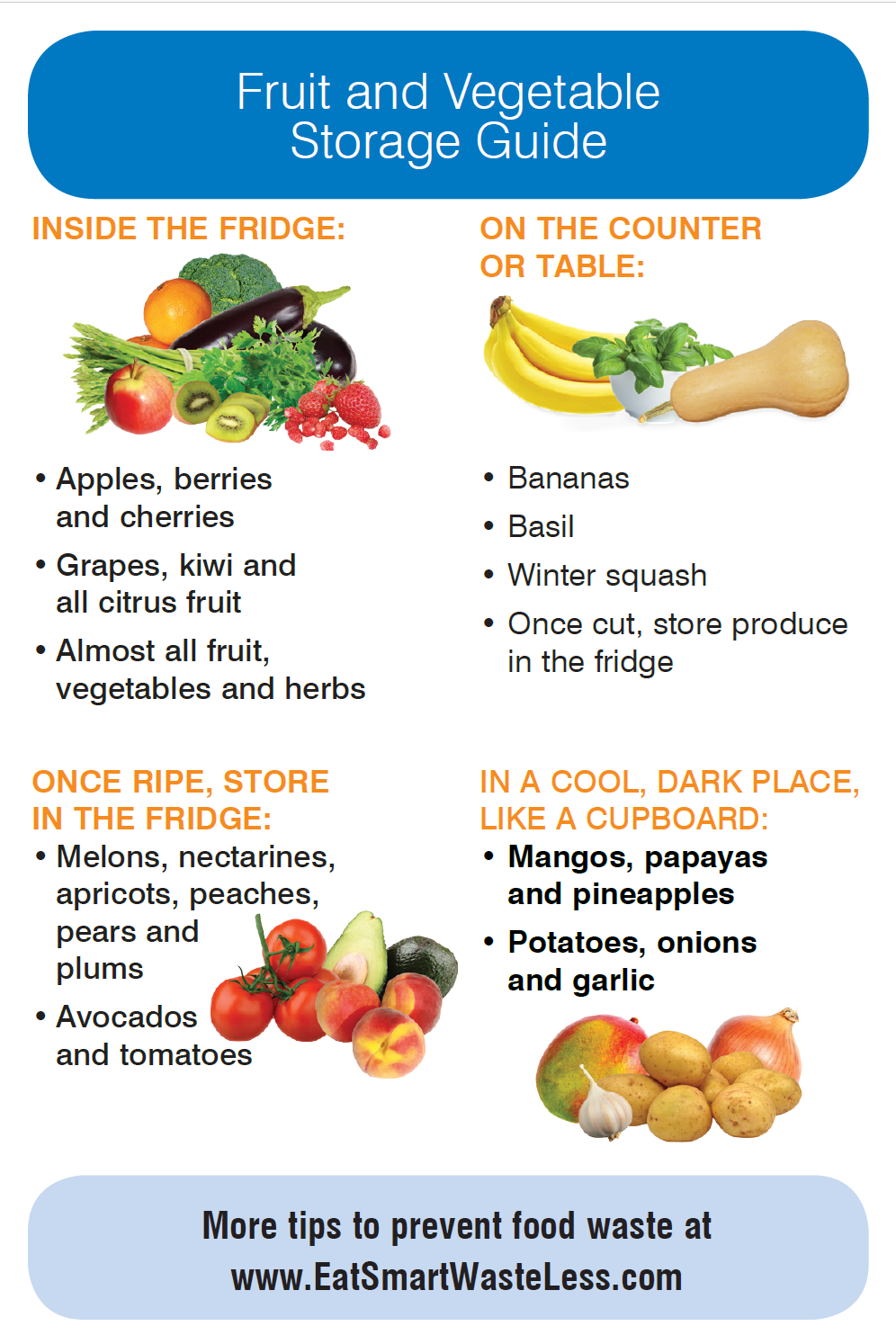Store it, Serve it and Share it
Did you know that food waste is responsible for 8% of global climate pollution? The good news is that it's easy to cut down on food waste at home! All it takes is three simple steps: store it, serve it and share it.
Your Impact
Action Steps & Tips
Introduction

Nearly 40% of all the food grown in the US is never eaten, which means 40% of all the resources like land, water, and energy we use to grow food gets wasted, too. And when food waste goes to a landfill it creates methane, a powerful climate pollution.
With a few simple changes, you can significantly reduce the amount of food you throw away. Just storing food the right way alone can be a game changer! Studies have shown that up to 2/3 of household food waste comes from improper storage.
Reducing food waste:
-
Saves time and money
-
Reduces climate pollution
-
Is a more efficient use of resources like land, water and energy
Nearly 1 out of every 6 Americans has trouble putting enough food on the table. Imagine what a difference it could make if all this wasted food was available to those who need it!
1 Do a food waste check
 Measure your food waste before taking action. If you don’t separate out your food waste now, find a container and use it to track the food you throw out. Try finding a container with a common size like a gallon or quart. Record the number of containers you fill up in a week. Then estimate your food waste in cups: 1 Gallon = 16 cups, 1 Quart = 4 cups and 1 Pint = 2 cups.
Measure your food waste before taking action. If you don’t separate out your food waste now, find a container and use it to track the food you throw out. Try finding a container with a common size like a gallon or quart. Record the number of containers you fill up in a week. Then estimate your food waste in cups: 1 Gallon = 16 cups, 1 Quart = 4 cups and 1 Pint = 2 cups.
You might be surprised at what you find! According to the U.S. Department of Agriculture, average food waste for a family of 4 is 45 to 60 cups (11 to 15 quarts) a week.
Take note of your reasons for throwing out food — is it past the date on the package, did you buy too much, forget to use leftovers, didn’t like it, etc. — and also what types of food you often throw out.
After a few weeks of taking the actions below, measure your food waste again. See how much you have reduced! Enter your result of cups of food waste saved a week when you mark the action complete.
Also, check out the Make a Meal Plan action for more ways to reduce food waste!
2Store your food to make it last
 Find out what foods go where. Storing your food in the right place can make all the difference. Check out some basic tips below. For more details, check out SaveTheFood.com’s Storage Guide and Stop Waste’s Food & Veggie storage guide.
Find out what foods go where. Storing your food in the right place can make all the difference. Check out some basic tips below. For more details, check out SaveTheFood.com’s Storage Guide and Stop Waste’s Food & Veggie storage guide.
-
Does it go in the fridge? First, know what to refrigerate. This includes meat, fish, cheese, dairy, eggs, most condiments, leftovers, some vegetables and fruits and some flours and baked products like tortillas and more. Make sure your refrigerator is set to 40 degrees or below. Check the food label and links above to learn more.
-
Where in the fridge?: The temperature varies in different areas in your fridge.
-
The inside of the door is the warmest spot in the fridge, good for the least perishable items like condiments.
-
The coolest place is the lowest shelf right above the crisper drawers, making it the ideal spot for meat, fish and poultry.
-
To learn more, check your fridge manual or this guide The Refrigerator Demystified.
-
In the freezer: The freezer is a great place to keep food fresh longer, including bread, meat, dairy and other staples. If you have something that is about to expire but you’re not quite ready to use it, put it in the freezer! Make sure your freezer is set to 0 degrees or below.
-
On the counter: Garlic, onions and ginger should always be left out in a cool, dry place. Fruits like peaches, bananas, persimmons and mangoes should also be kept on the counter, so that they have time to fully ripen. If they are ripe but you aren't ready to use them yet, put them in the fridge.
-
Separate the ripe fruits. Some fruits and vegetables release a chemical into the air as they ripen that can quickly ripen everything around them. Keep fast-ripening fruits like bananas, avocados, peaches and apples separated from other fruits and veggies to keep them fresh for longer — inside or outside of the fridge!
-
Follow the “First In, First Out” rule. When you restock items like lettuce, put the fresh bunch behind the partly-used one. It’ll help you remember to use the older items first.
3Serve Smart
 Serve less. If you start off by serving a bit less on your plate, you’re less likely to end up throwing away those last few bites you can’t finish. You can always go back for more!
Serve less. If you start off by serving a bit less on your plate, you’re less likely to end up throwing away those last few bites you can’t finish. You can always go back for more!
Leverage those leftovers. Make leftovers a part of your meal planning. Most leftovers kept in the fridge are best eaten within 2-3 days. If you are not ready to use them yet, freeze them!
Know your dates. Many food labels are unclear and not safety deadlines. Some common labels:
-
“Use by,” “Best by,” and “Best before” dates: These are not Food and Drug Administration (FDA)-regulated expiration dates. These labels indicate when the product will be at its highest quality.
-
“Sell-by” date: This tells retailers when they should pull an unsold product from the shelf. Make sure to purchase meat and poultry before its sell-by date. If you store and cook it properly it’s often safe to eat for a couple of days after that date passes.
-
“Expires on” date: This is the only FDA-enforced expiration date, and the only place you’ll find it is on infant formula.
Use your senses, like a visual inspection and sniff test, and your judgement when deciding whether or not to throw something out. You can also use this guide to help you decide.
Brave the bruises. When your fruits and veggies do start to get funky, don’t throw them away! Instead, cut out the yucky part and find a creative use for the rest:
-
Throw overripe fruit in the blender.
-
Do some baking. Banana bread, for example, is best with really brown bananas.
-
Frittatas and stews are two easy dishes to use up extra vegetables that don’t require perfect-looking ingredients.
-
Check out these Tips and Tricks to Save Money by Reducing Food Waste for more ideas!
4Donate & Compost
 Check your pantry and help feed your community. If you buy in bulk or stock up on supplies, check through your pantry at least once a year and donate the things you won’t use to a local food bank.
Check your pantry and help feed your community. If you buy in bulk or stock up on supplies, check through your pantry at least once a year and donate the things you won’t use to a local food bank.
Hunger is a growing problem in the US. Your local food bank will gratefully accept your canned beans, peaches, soup, and any other non-perishable items you have on hand. Right now only 10% of wasted food in the US is recovered for food banks, so donating what you can from your pantry will mean a lot for your community.
What you can’t use or donate, compost! Instead of throwing food waste in the garbage, compost it! Composting reduces climate pollution and creates rich, fertile soil for your garden. Check out the Compost Action for more tips.
Extra Credit: Support food recovery. Food recovery organizations are community groups that collect unused food from supermarkets, restaurants and farms before it gets wasted. This food is then donated to food banks, soup kitchens, and other organizations. Volunteering with a food recovery group is a great way to help reduce food waste beyond your household. Find your local group with this handy Food Rescue Locator.
